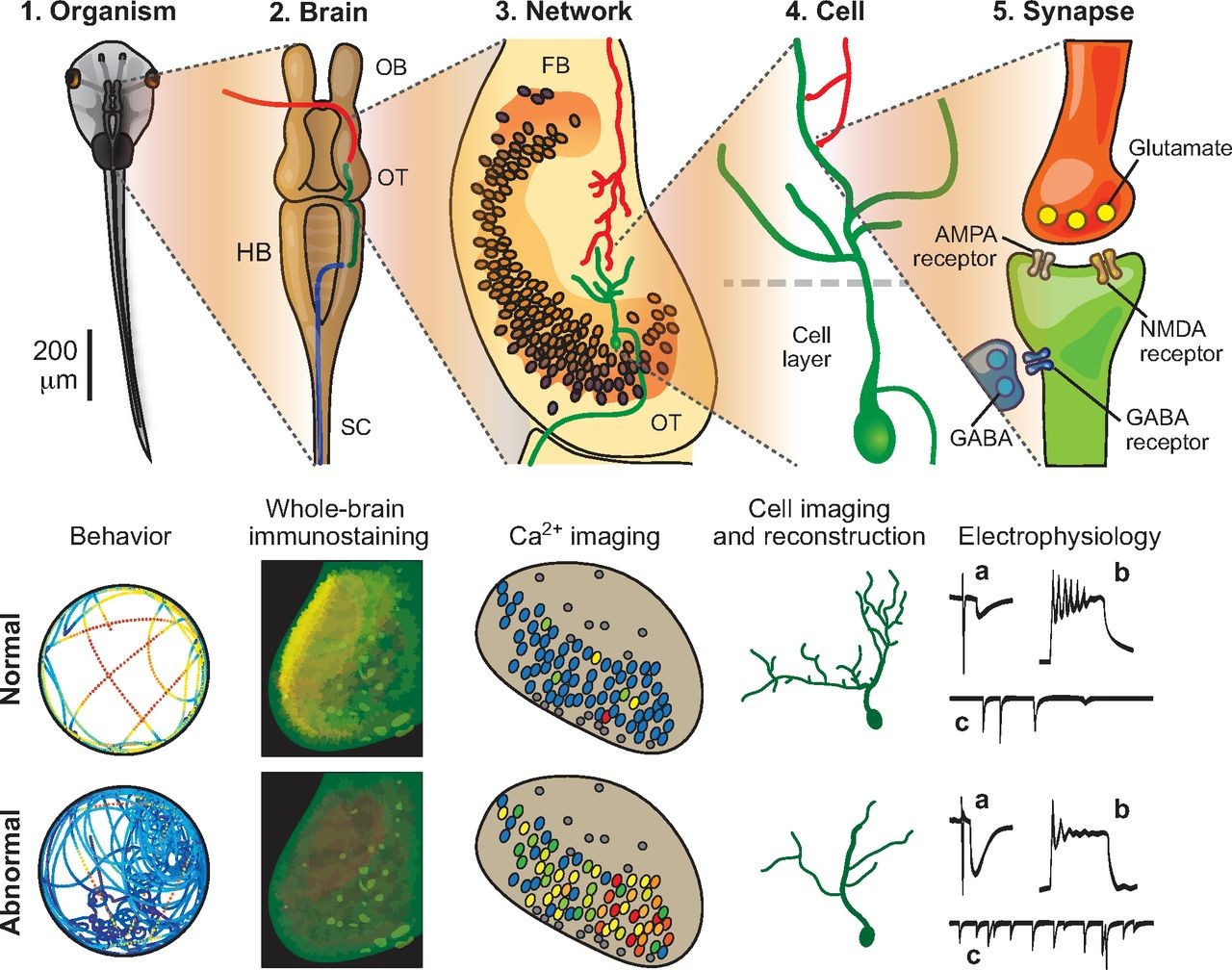Insights into autism and epilepsy using Xenopus
Modeling human neurodevelopmental disorders in the Xenopus tadpole: from mechanisms to therapeutic targets
The Xenopus tadpole model offers many advantages for studying the molecular, cellular and network mechanisms underlying neurodevelopmental disorders. Essentially every stage of normal neural circuit development, from axon outgrowth and guidance to activity-dependent homeostasis and refinement, has been extensively studied in the Xenopus tadpole, making it an ideal model to determine what happens when any of these stages are compromised. Kara Pratt (University of Wyoming) & Arseny Khakhalin (Brown University) provide an update on how Xenopus models are being used to study three distinct types of neurodevelopmental disorders: diseases caused by exposure to environmental toxicants, epilepsy and seizure disorders, and autism, in the Sept 2013. issue of Disease Models & Mechanisms.
Image published in: Pratt KG and Khakhalin AS (2013).
Last Updated: 2013-11-19
